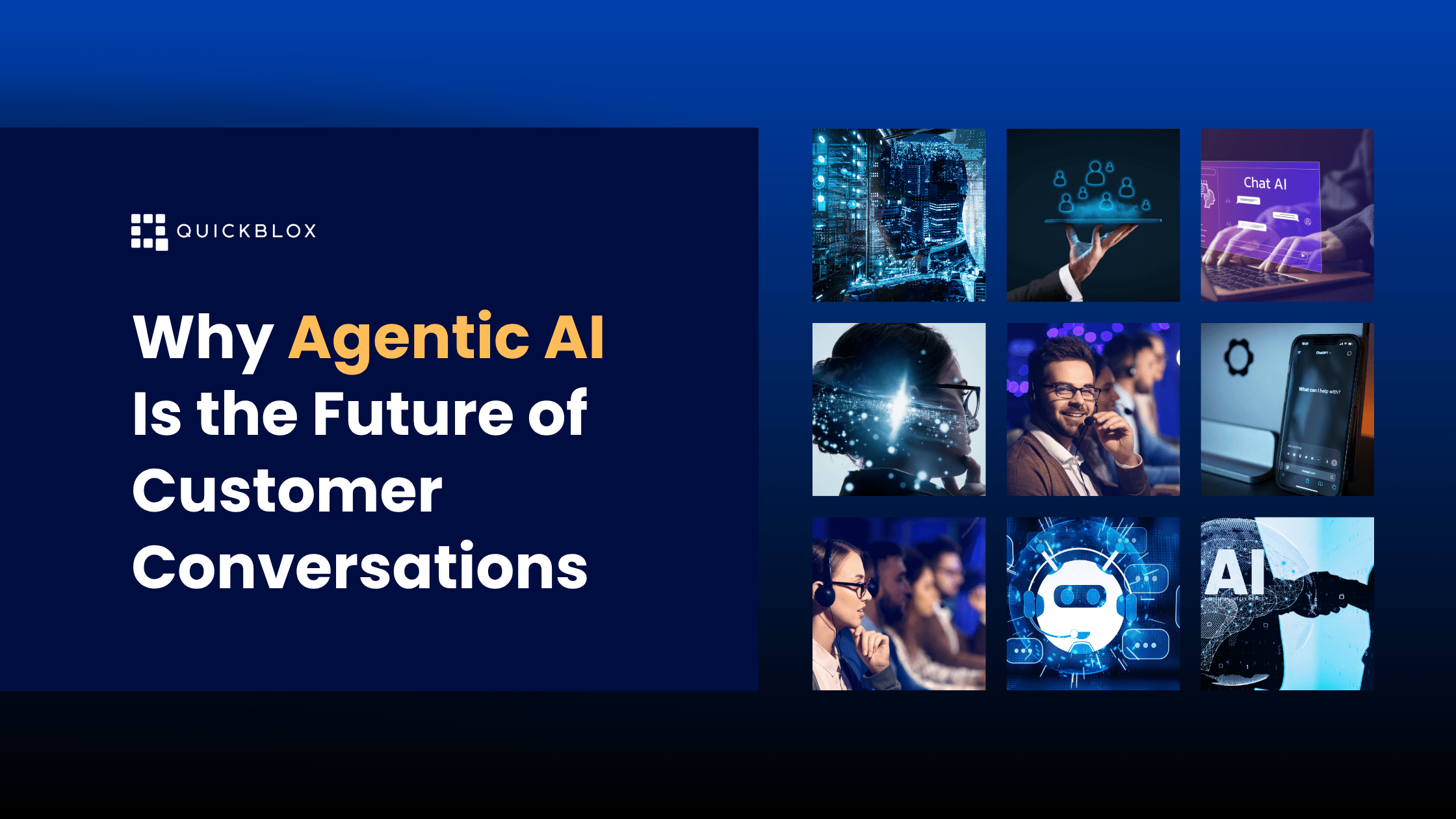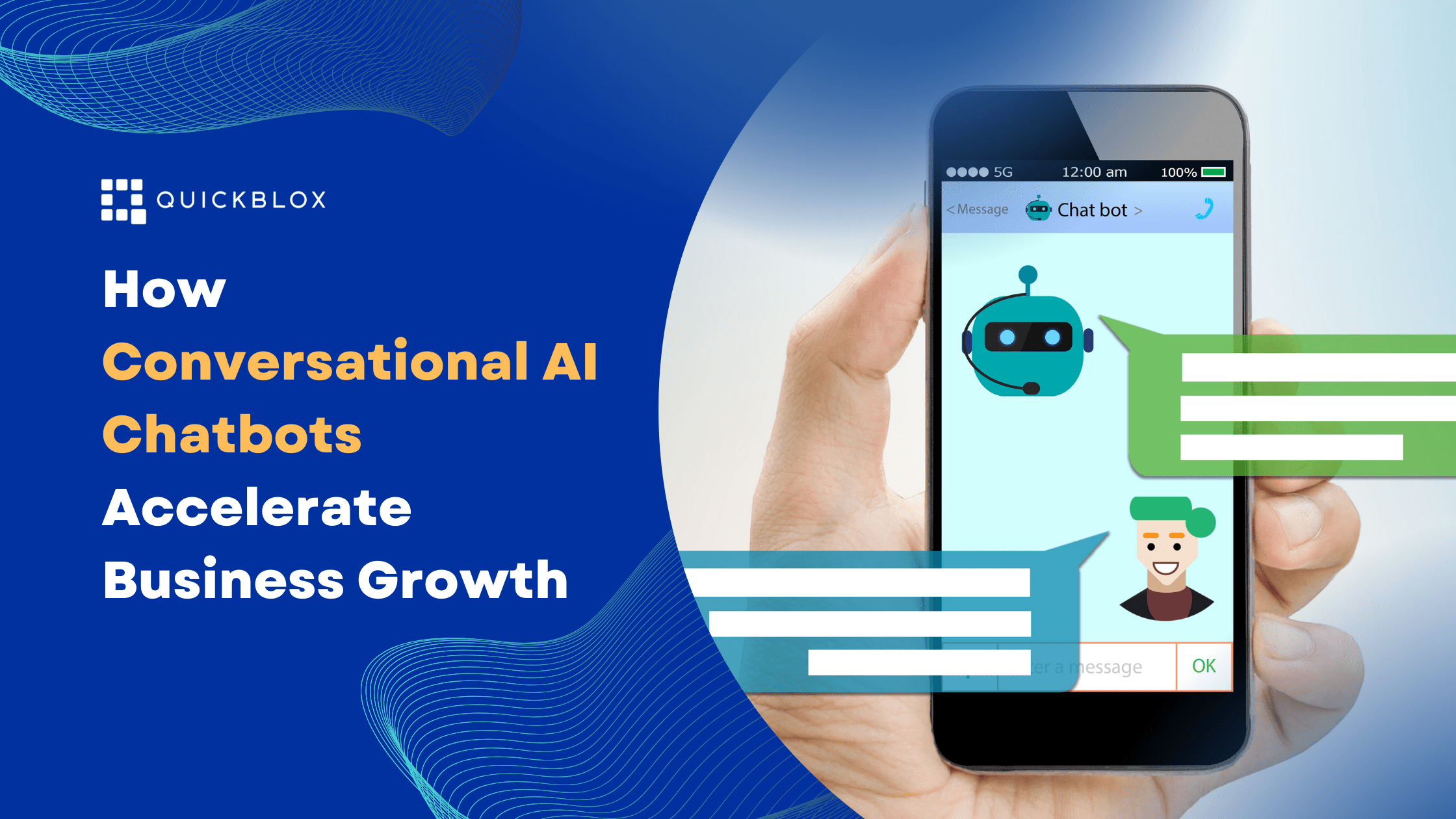
Summary: This blog introduces agentic AI and explains how it goes beyond traditional chatbots by taking autonomous actions, not just responding to messages. It covers key differences from conversational AI, real-world use cases, current limitations, and explains why agentic AI is set to redefine customer interactions.
Table of Contents
Introduction
Until very recently much praise has been directed at conversational AI chatbots for their stunning ability to mimic human language. Conversational AI can moderate tone and understand context to provide responses to customer questions that feel natural and human-like.
But imagine a scenario when a customer contacts your platform in the early hours of the morning, not with an FAQ, but with a complicated problem that requires numerous steps, choices, and data inputs. Here is where we see the limits of conversational AI.
Enter agentic AI. Instead of having to wait hours for support, this customer can be guided by an AI agent that not only comprehends their intent but also takes initiative—pulling records, updating settings, scheduling follow-ups, and handing off to a human only if necessary. Agentic AI is not any old chatbot, it’s a new breed of AI that can act, reason, and produce results on its own.
This article will discuss the unique features of agentic AI, its current significance, and how it is changing customer conversations to provide faster, smarter support.
What is Agentic AI
Agentic AI is a form of AI that can behave with an element of agency. Agentic AI systems can make decisions, set goals, adjust to new situations, and perform autonomous actions in order to drive specific outcomes. Such systems do not simply wait for instructions before they act, they proactively evaluate situations, assess what needs to happen, and carry out appropriate tasks, often with minimal human input.
Key features of agentic AI are:
- Autonomy: It can take the initiative and make decisions on its own.
- Goal-directed behavior: It works toward reaching a stated goal.
- Contextual awareness: It is aware of its environment and reacts to it.
- Self-development: It can improve based on outcomes and become better with time.
Learn more about – How AI Chatbots Work: A Comprehensive Guide
How is Agentic AI Different from Conversational AI?
While conversational AI is programmed to reply to user inputs, such as responding to FAQs or assisting with simple tasks, agentic AI takes it a notch higher. It acts independently, making decisions, taking action, and working toward a specified goal without the need for user prompts. In other words, conversational AI speaks; agentic AI reasons and acts. This results in an AI system that is capable of producing more dynamic, proactive and personalized customer experiences. This is the essence of agentic AI meaning—AI that acts independently, not simply responding to commands but actively shaping its environment and interactions.

Learn more about – The Role of Conversational AI Chatbots in Transforming Financial Services
Now that we have a better understanding of the nature of agentic AI and how it differs from conversational AI- let’s consider how it can potentially transform business relationships with customers. By anticipating needs, personalizing interactions at scale, and proactively problem-solving, agentic AI has much to offer.
Key features of agentic AI architecture include:
1. Proactive Participation
Rather than waiting for a support ticket, agentic AI can monitor customer behavior, detect friction points, and initiate a conversation with helpful suggestions. For example, Agentic AI would be able to identify if a customer is having trouble with onboarding, and without being prompted could reach out to offer step-by-step guidance.
2. Personalized Interactions at Scale
Agentic AI relies on user data and context to adapt and customize conversations in real time. It recalls past interactions, adjusts tone and language according to user profile, and suggests the next-best action so that each interaction is human-like and relevant.
3. Autonomous Problem Solving
Agentic AI is capable of carrying out meaningful tasks by their own accord. It can process refunds, update records, and reschedule meetings without needing to be prompted and without needing to escalate to a human agent. This minimizes wait times and enhances customer satisfaction.
4. Multi-Channel Consistency
Regardless of whether it’s done through chat, email, voice, or in-app messages, agentic AI is consistent across platforms. It recognizes the same user from platform to platform and transfers the context, providing seamless experiences.
5. Ongoing Learning and Adjustment
Agentic AI learns through experience. As it learns from previous interactions and feedback, it gets smarter and more intelligent, building on top of that and creating smarter, faster, and better conversations in the process.
Real-World Applications of Agentic AI
Agentic AI has already impacted the real world across various industries by automating processes, providing improved user experiences, and improving customer care. Some of the real-world applications that reflect its versatility and potential for transformation are listed below:
Healthcare: Smarter Patient Engagement
Agentic AI improves patient communication through the automation of intake processes, individualized follow-up care, and routine administrative tasks.
Example: A telemedicine platform brings agentic AI to handle patient intake and follow-up. Based on patient history, it automatically adjusts follow-up questions, reminds patients to fill prescriptions, and tailors care plans, creating a personalized journey without inundating staff.
Learn more about – AI Medical Assistants: Benefits, Challenges, and Opportunities
Financial Services: Secure, Autonomous Support
In banking and fintech, agentic AI handles sensitive transactions accurately. It tracks activity, identifies anomalies, and resolves problems in real-time.
Example: A digital bank uses Agentic AI to detect suspicious activity, freeze hacked accounts, and alert customers, minimizing fraud losses and response times.
Agentic AI can also handle other routine support tasks. For instance, if a customer reports an unfamiliar charge, the AI can flag this, freeze their card, initiate a dispute, and provide a temporary replacement card, all without requiring the user to interact with a human agent.
E-Commerce: Hyper-Personalized Shopping Assistants
Agentic AI provides personalized product suggestions, monitors user activity, and re-engages customers across channels.
Example: A clothing e-commerce site employs agentic AI as an online stylist that can recommend items based on purchase history, browsing patterns, and size preferences. In a further example, agentic AI can monitor real-time cart abandonment. If a customer remains on the checkout page without making a purchase, AI nudges the customer through chat, offering a limited-time offer or support with a payment option, increasing conversion rates.
Travel & Hospitality: Real-Time Guest Services
Travel agencies use agentic AI to make reservations, arrange itineraries, and manage disruptions.
Example: An airline uses agentic AI to automatically rebook passengers who face flight cancellations, update them by preferred channels, and provide voucher options without agent intervention. Agentic AI can interact with travelers across web chat, mobile app, and SMS. For instance, if a customer inquires about baggage allowance through the website, and then subsequently calls in, the AI system recalls the previous chat and resumes the conversation with ease.
SaaS & Tech: Seamless User Onboarding & Support
SaaS solutions employ agentic AI to onboard customers, respond to technical questions, and troubleshoot errors independently.
Example: A SaaS platform employs agentic AI to assist with customer onboarding and support tickets. Over time, learning from user feedback and support outcomes, the AI gets increasingly adept, improving in its ability to guide users through set-up, recognizing patterns in support tickets, and even suggesting new product features to developers.
Apart from customer onboarding and support, agent AI can also shine in the area of customer success. The AI could identify churn risk based on usage patterns and proactively draft personalized re-engagement messages, schedule calls with Customer Success Managers (CSM), and report unusual behavior for review. Such actions reduce churn and save CSM time.
Agentic AI’s Limitations (and How to Address Them)
Despite its many advantages, Agentic AI is a complex technology and there some challenges you will need to overcome if you wish to implement this tool into your business workflows. Here’s a high-level view of what’s involved:
1. Complexity of Design and Deployment
Agentic AI is not plug-and-play like most chatbots. It usually calls for:
- Advanced prompt engineering
- Tool integrations (e.g., APIs, databases)
- Memory management and multi-step planning
How to Overcome:
- Begin with low-stakes, simply applications (e.g., internal ticket routing).
- Select platforms with modular parts and pre-built workflows so that you can build up slowly.
- Work with a communication platform provider that offers Agentic AI tools and who can assist with integration.
2. Data Privacy and Compliance Risks
Agentic AI systems typically have access to sensitive information and perform independent actions, triggering alarms in highly regulated sectors (e.g., healthcare, finance).
How to Overcome:
- Collaborate with vendors providing compliance-grade AI solutions (e.g., HIPAA, GDPR, SOC 2).
- Implement role-based access, human-in-the-loop approvals, and audit trails.
- Plan on-premises or private cloud deployment for the sensitive data.
3. Lack of Trust and Explainability
Business executives and employees might be hesitant to trust AI systems that they don’t fully comprehend, particularly when the AI operates independently.
How to Overcome:
- Choose agentic AI that explains its output with results (e.g., reason traces, citations).
- Develop transparency dashboards to show why an agent made certain choices.
- Use phased deployment where AI suggests first and then takes action once trust has been earned.
4. Legacy System Integration
To really work, Agentic AI needs to be integrated with systems like CRMs, helpdesk tools, databases, or internal APIs, but these may not be prepared for AI automation.
How to Overcome:
- Begin with systems that already offer built-in API integrations (e.g., Salesforce, HubSpot, Zendesk).
- Apply API orchestration platforms or middleware (e.g., Zapier, Make, or custom webhooks).
- Upgrade key parts of your tech stack in parallel.
5. Change Management and Resistance
Employees may fear AI will take away their jobs or alter work processes in a disruptive manner.
How to Overcome:
- Communicate that agentic AI has come to augment, not replace.
- Engage teams early in design to collaborate on AI workflows.
- Provide training to enable staff to understand and collaborate wit the AI.
6. Maintaining Control and Oversight
Since agentic AI can take actions independently, there’s a risk of errors or unintended consequences.
How to Overcome:
- Establish clear guardrails, fallback mechanisms, and escalation procedures.
- Implement confidence thresholds to allow AI to escalate to humans when in doubt.
- Track performance via dashboards and enable rollback or overrides with ease.
The bottom line is, you need to treat agentic AI like an employee and provide it with tools, duties, and supervision. Like any other worker, testing, training, and trust must be established.
Conclusion
Agentic AI is not just another trend passing by; it’s how companies are going to communicate, serve, and retain customers in the future. As AI technology evolves from reactive chatbots to proactive decision-makers, the possibilities for enhanced customer experience, process efficiency, and competitive advantage are too great to overlook.
The change is already underway. The question is: Will your company be at the forefront of fighting to catch up?
With QuickBlox, it’s simple to embed AI-powered communication capabilities, like a white-label agent AI assistant, into your apps and platforms. Whether you’re in healthcare, finance, retail, or IT, we have scalable, secure solutions that can expand as your business grows.
Contact us now to discover how QuickBlox can help you create complex, user-centered AI experiences.
Talk to a sales expert
Learn more about our products and get your questions answered.
Contact sales FAQs
What is agentic AI?
Agentic AI is an artificial intelligence system that can operate independently, by setting goals, making decisions, and taking action without constant human input. Rather than simply just responding to prompts, Agentic AI proactively assesses a situation and acts with purpose to achieve specific goals.
How is conversational AI different from agentic AI?
Conversational AI responds to user inputs, typically through dialogue, while agentic AI takes it further by acting autonomously—making decisions, initiating tasks, and pursuing goals without waiting for commands.
What are the advantages of agentic AI for customer service?
Agentic AI enhances customer service by reducing response times, personalizing interactions, and automating complex, multi-step tasks. It can identify and resolve issues proactively—often before they escalate—leading to faster support, greater efficiency, and higher customer satisfaction.
Can agentic AI be implemented in regulated areas such as healthcare or finance?
Yes, but it must be done on secure, compliant platforms (e.g., HIPAA or SOC 2 certified) that enable transparency, human control, and data protection measures.
Is agentic AI difficult to implement?
Not necessarily. Agentic AI can be integrated via APIs, SDKs, or low-code platforms, making it accessible for many businesses. Beginning with one use case (such as support automation or onboarding) helps keep it within a manageable scope.
What are the tools or platforms that enable agentic AI development?
QuickBlox, LangChain, OpenAI, and Google Vertex AI are some of the platforms that offer capabilities to build agentic workflows, especially when applied with secure integrations and orchestration frameworks.
How do I begin implementing agentic AI into my business?
Start by identifying high-impact, repetitive tasks—such as onboarding, customer support, or scheduling—where autonomous action can save time or enhance the user experience. Then, partner with a reliable platform like QuickBlox to develop and deploy a pilot use case.









